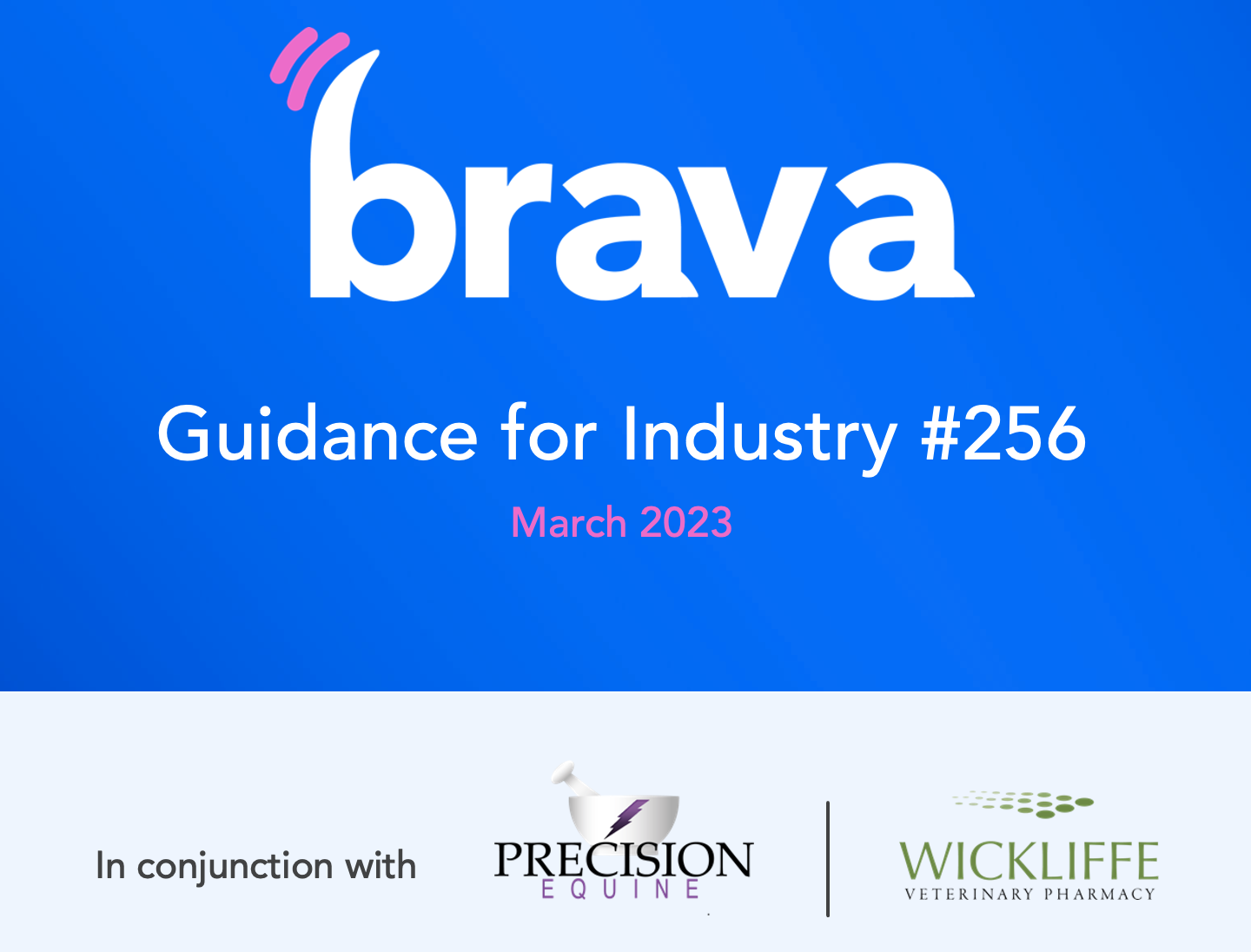Understanding GFI-256 for Equine Veterinary Professionals
What Does GFI-256 mean for Veterinary Professionals?
To effectively treat patients, veterinarians rely on many different types of medications, including compounded drugs when there isn’t an FDA-approved or indexed drug available for proper treatment. In April 2022, the FDA released Guidance for Industry #256 (GFI #256), which provides guidelines and clarification around how pharmacies may supply compounded drugs for animals. While the burden of compliance falls on the pharmacy, below are the key points veterinary professionals should familiarize themselves with regarding this document, and how this new guidance may impact their prescribing and usage of compounded drugs.
1. Copies of commercially available products will require clinical and medical justification.
The FDA’s first regulatory priority involves compounds that are essentially copies of proprietary products (FDA-approved, conditionally approved, or indexed). If a copy is necessary for a patient based on the professional judgement of the veterinarian, the FDA will require documentation as to why the patient’s needs cannot be met by a proprietary product and a compounded medication is therefore required. The FDA has broadly defined a copy as anything that is given via the same route administration, so a compounded oral suspension would be considered an essential copy of a commercially available tablet and would require justification. The FDA has indicated they will not question professional judgement in most cases. They have also included several examples of what they will consider valid clinical rationale including, but not limited to:
• An ingredient in an approved product is toxic to a specific species
• The animal would require too many tablets of an approved product as treatment (per dose)
• The approved product cannot be manipulated to provide a safe and efficacious dose to the animal patient (often the case with tiny or very large patients)
As a result of these changes, compliant compounding pharmacies will begin asking for and capturing this information when new prescriptions are issued.
2. Office-use formulations will be limited to discourage mass distribution.
With this guidance, the FDA has also limited how compounded office stock medications are formulated. The source of the active pharmaceutical ingredient (API) for a compounded formulation may come from either a bulk substance (pure drug) or a commercially available product. In many situations compounding a formulation from a commercial product is not a viable option. The FDA acknowledges these circumstances, particularly when a starting ingredient contains a potential toxin to an animal patient, contains large amounts of excipients, or when no FDA-approved product exists (e.g. isoxsuprine, methocarbamol, doxycycline). Under GFI 256, the FDA has recommended that all office stock preparations are compounded from either a commercial product or from an approved list of bulk drug substances. This limitation will substantially impact veterinarian access to compounded medications used in the clinic. As of January 2023, there are approximately 20 bulk drug substances on the approved list, 15 on the denied list, and nearly 100 still to be reviewed.
By limiting the formulation of office-stock compounds, the FDA is restricting the availability of compounded preparations that clinics keep on hand to administer or dispense to patients. The goal of this change is to prevent the mass distribution of unapproved products from pharmacies and veterinary clinics, a practice that the FDA believes could endanger animals if poor-quality compounds were involved. As a result, veterinarians will see a reduction in compounded products available for office use.
It is worth noting that individual animal patient prescriptions are not impacted by these limitations. Patient-specific prescriptions can be formulated from bulk drug substance based on the compounding pharmacist’s professional judgement in conjunction with the veterinarian provided medical rationale if the product is considered an essential copy.
And one last point to note – there will likely be exceptions where the FDA will allow compounding from bulk drug substances for office-use stock in times of drug shortages. While the process for this has not yet been defined, it is widely accepted that compounding can play a valuable role in providing continuity of care for patients when such conditions exist.
3. Adverse Drug Event Reporting is now required for patient safety.
The guidance also adds a requirement for the pharmacist and/or veterinarian to report any adverse event or product defect to the FDA using Form FDA 1932a within 15 days of becoming aware of the reported adverse event. By improving the frequency with which adverse events are reported, the agency aims to increase patient safety and more promptly recognize any quality issues.
4. These guidelines are intended to protect both patients and practices.
The FDA’s intention with these changes is to ensure that compounded medications are safe and effective, and that patients are protected throughout the process of treatment and dispensing, which is a goal that both pharmacies and veterinarians can certainly agree is worthwhile.
The agency invests significant time and resources into assuring the quality, safety, and efficacy of commercial products. This oversight is essential for not only protecting animal welfare, but also to encourage development of new and innovative drugs. Without the benefit and protection of proprietary formulations, fewer companies may be willing to invest the substantial resources needed to undertake the FDA approval process, which would not be beneficial for the veterinary industry or the animals it serves.
The biggest takeaway for veterinarians is to choose a compounding pharmacy partner who is adhering to GFI #256 (both in formulary as well as in procedural changes) so that your practice and patients are protected. Veterinarians are encouraged to review the guidance in its entirety, compare it to information you may have received from others, and consider the application to your practice. Should you have any further questions, we at Wickliffe also welcome the opportunity to assist.
Understanding GFI #256 Webinar
In conjunction with Brava Compounding Pharmacy
HELPFUL RESOURCES
Below are a list of links that may be helpful for you and your clinic(s).
- FDA Page on GFI #256: https://www.fda.gov/regulatory-information/search-fda-guidance-documents/cvm-gfi-256-compounding-animal-drugs-bulk-drug-substances
- FDA Animal Compounding Page: https://www.fda.gov/animal-veterinary/unapproved-animal-drugs/animal-drug-compounding
- The Approved List: https://www.fda.gov/animal-veterinary/animal-drug-compounding/list-bulk-drug-substances-compounding-office-stock-drugs-use-nonfood-producing-animals
- Under Consideration List: https://www.fda.gov/animal-veterinary/animal-drug-compounding/bulk-drug-substances-currently-under-review
- Denied List: https://www.fda.gov/animal-veterinary/animal-drug-compounding/bulk-drug-substances-reviewed-and-not-listed
- FDA's GFI Q&A Page: https://www.fda.gov/animal-veterinary/animal-drug-compounding/qa-gfi-256-compounding-animal-drugs-bulk-drug-substances

